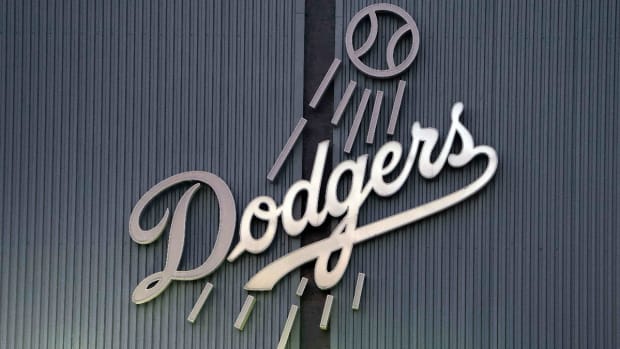Dodgers: Revisiting the 1985 Bill Madlock Trade

Play word association with Los Angelenos of a certain age and the phrase “R.J. Reynolds” and get the following two (and only these two) responses:
One, “sure, the famous cigarette company, R.J. Reynolds,” founded in Winston-Salem, North Carolina, sickening humans since 1875 and currently “transforming tobacco,” don't ya know. And more pleasantly, "R.J. Reynolds, the then-rookie 24-year-old outfielder who ended one of the most exciting regular season games in Dodger Stadium history with a squeeze bunt to send the faithful into delirium, on September 11, 1983."
The win gave Los Angeles a three-game lead over the second place Braves (then a National League West club), and an eventual division crown. Reynolds would finish the season with a .236/.267/.345 line, two home runs and 11 RBIs in 55 at bats, and hit .259/.299/.351 as a Dodger in parts of three seasons, with four homers and 60 RBIs, none more meaningful than his game-winner on 9/11.
Equally as important to his legacy was Reynolds' inclusion among three players to be named later in a trade to Pittsburgh for third baseman Bill Madlock on August 31, 1985. Sid Bream and Cecil Espy were the other PTBNL. Reynolds went on to play five more seasons for the Bucs, contributing a .269/.327/.390 mark, with 31 HR, 234 RBIs and 91 steals, retiring after at 31 after the 1990 season.
[Follow Sports Illustrated’s Inside the Dodgers on Twitter.]
Espy, who did not make an appearance as a Pirate until 1991, eventually resurfacing with the Rangers in 1987, before finding his way back to Pittsburgh and then Cincinnati, went on to hit .244/.301/.321, with seven homers, 108 RBIs and 109 steals in 1248 at bats lifetime in eight years.
Bream, of course, is best remembered for beating Barry Bonds' popgun-arm throw to the plate as his Atlanta Braves beat San Francisco in Game 7 of the National League Championship Series. He was a more-than-serviceable player for the Pirates, Braves and Astros, putting up a .264/.366/.420 line, with 90 homers and 455 RBIs in his 12-year career.
Decide for yourself if the Dodgers won the trade, but remember that while Madlock did the heavy lifting in his career (four batting titles, over 2000 hits and a .305/.365/.442 mark) before being traded to Los Angeles, the Dodgers would not have won the division without him in 1985.
Madlock hit .360/.442/.447 over the final month of the season, following up with a three-homer, seven-RBI, .333/.333/.750 NLCS performance. Like then-left fielder Pedro Guerrero, who fired his glove to the turf in disgust, Madlock watched helplessly as Jack Clark's homer off the dreaded Tom Niedenfuer screamed by him and into the left field pavilion, sending the St. Louis Cardinals to the World Series (video intentionally omitted).
The 35-year-old Madlock hit .280/.336/.404, with 10 and 60 for the Dodgers in 1986 and .180/.265/.344 to begin the 1987 campaign, before being released on May 29. Signed by the Tigers six days later, he hit .279/.351/.460, with 14 and 50 to end his career on a high note.
And remember, glove conquers all.
Howard Cole has been writing about baseball on the internet since Y2K. Follow him on Twitter.






